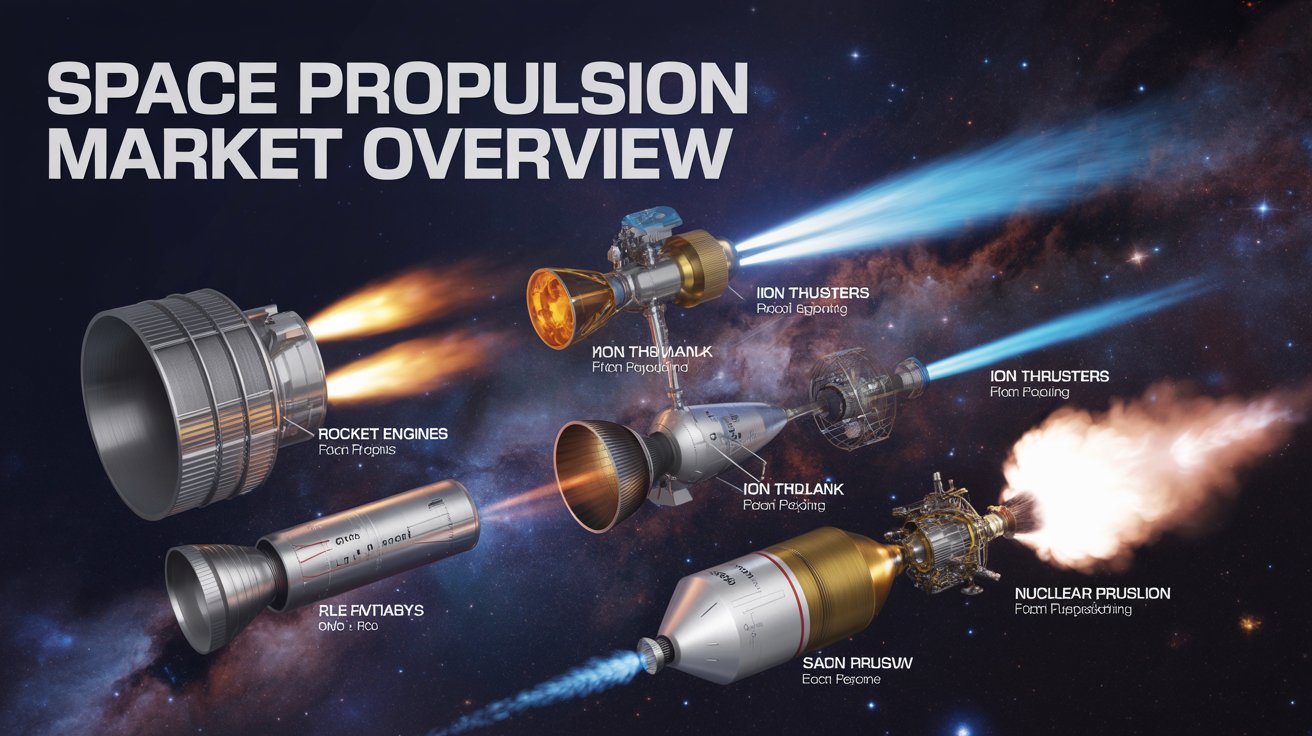The global Space Propulsion Market is Estimated at USD 10.21 billion in 2024, projected to reach USD 20.02 billion by 2030, growing at a CAGR of 11.9%. This rapid expansion is fueled by three transformative trends — the proliferation of LEO satellite constellations, a surge in commercial space ventures, and private investment in orbital and launch infrastructure.

At the heart of this growth lies propulsion technology — the key enabler of spacecraft mobility, precision maneuvering, and mission longevity. From station-keeping and collision avoidance to deep-space exploration, propulsion is the foundational technology powering the emerging space economy.
Download PDF Brochure @ https://www.marketsandmarkets.com/pdfdownloadNew.asp?id=118742255
Satellite Propulsion: Powering the LEO Economy
The Low Earth Orbit (LEO) ecosystem is quickly evolving into a multi-trillion-dollar market, but its sustainability relies heavily on propulsion innovation. Efficient satellite propulsion is essential for mission cost optimization, safety, and operational endurance, enabling large-scale constellation deployment and commercial viability.
Electric propulsion — particularly ion thrusters and Hall-effect thrusters — is becoming the preferred choice. These systems drastically reduce propellant requirements, lower launch costs, and extend satellite lifespans. Key capabilities include:
-
Precise orbital maneuvers
-
Collision avoidance
-
Seamless constellation coordination
Emerging trends such as miniaturized thrusters and green propulsion technologies are transforming small satellite operations. CubeSats and microsatellites now benefit from enhanced maneuverability and compliance with orbital debris regulations, positioning propulsion as the backbone of a sustainable LEO economy.
Enabling Mega-Constellations and Last-Mile Delivery
Modern propulsion systems are revolutionizing satellite deployment strategies. The concept of “last-mile orbital delivery” allows satellites to maneuver independently to precise operational orbits after shared launches, optimizing time and reducing costs.
-
Electric propulsion drives efficiency in broadband constellations such as Starlink and OneWeb.
-
Chemical propulsion remains crucial for rapid-response, defense, and high-thrust requirements.
Standardized propulsion interfaces are paving the way for in-orbit servicing, including satellite refueling, repairs, and repositioning — transitioning LEO from a launch-and-forget approach to a sustainable orbital infrastructure model.
Solid Rocket Motors (SRMs): Reliable Backbone of Launch Systems
SRMs continue to be a critical enabler for launch vehicles and deep-space missions. Advances in rotating detonation engines (RDEs) and pulse detonation systems are improving thrust efficiency while reducing emissions.
Manufacturers are integrating:
-
Smokeless and green propellants
-
Automated production systems for scalability
SRMs are essential for missions where simplicity, reliability, and safety are paramount — including NASA Artemis, ISRO Gaganyaan, and Blue Origin New Glenn. Increasing lunar and Mars exploration efforts are driving hybrid propulsion models combining solid, chemical, and reusable architectures.
Electric Propulsion: High Efficiency for Next-Gen Spacecraft
Electric propulsion is transforming satellite fleet management with high specific impulse and minimal propellant consumption, enabling:
-
Station-keeping
-
Orbit transfers
-
End-of-life deorbiting
Miniaturized electric propulsion systems for CubeSats and nanosatellites are extending mission lifetimes while reducing satellite mass. Programs such as NASA NEXT-C and ESA E-THEMIS highlight the growing adoption of electric propulsion across both commercial and government missions.
Nuclear Propulsion: Unlocking Deep-Space Frontiers
As human exploration moves beyond Earth orbit, nuclear propulsion is emerging as a transformative technology for interplanetary missions:
-
Nuclear Thermal Propulsion (NTP): Uses a nuclear reactor to superheat propellant, delivering high thrust for rapid Mars transfers.
-
Nuclear Electric Propulsion (NEP): Generates electricity to power ion thrusters, providing long-duration efficiency for deep-space operations.
Key players such as BWX Technologies, Aerojet Rocketdyne, and USNC-Tech are pioneering compact nuclear systems, while NASA’s Kilopower Project demonstrates the feasibility of NEP for sustained missions. Nuclear propulsion could halve mission times and enable continuous logistics for Mars colonization and asteroid mining.
Technological Convergence: Driving the Space Economy
The propulsion landscape is converging along three axes: efficiency, sustainability, and scalability. Key dynamics include:
-
Electric propulsion: Revolutionizing orbital operations
-
Solid rocket motors: Ensuring launch reliability
-
Nuclear propulsion: Enabling deep-space exploration
Simultaneously, green fuels, modular thruster designs, and automated manufacturing are reinforcing long-term sustainability. Industry leaders including Airbus, Northrop Grumman, SpaceX, and Rocket Lab are investing heavily in propulsion R&D, recognizing that future competitiveness depends on how efficiently spacecraft can maneuver in orbit.
Ask for Sample Report @ https://www.marketsandmarkets.com/requestsampleNew.asp?id=118742255
Propulsion: The Engine of the New Space Economy
The Space Propulsion Market sits at the intersection of innovation, sustainability, and exploration. Propulsion is more than power — it is freedom of movement, mission endurance, and a gateway to exploration.
From CubeSats to interplanetary spacecraft, propulsion is the core enabler of the next-generation orbital economy. As electric, solid, and nuclear propulsion technologies mature, we are witnessing the rise of a new space economy — one defined by agility, longevity, and boundless potential.
